Complete Solutions to EXERCISE 5.1 of chapter TRIANGLES of Class 9 book with complete answers and questions
| Class 9 | MATHS |
| Chapter | TRIANGLES |
| CPC CAMBRIDGE PUBLICATION | EXERCISE 5.1 |
| Number Of Questions | 8 |
| Academic Year | 2023-24 |
AC = AD and AB biseets A. show that `Delta ABC ~= Delta ABD`. What can you say about BC and BD?
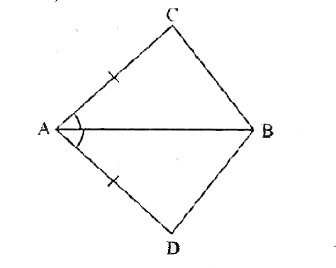
View SolutionABCD is a quadrilateral in which AD=BC and `angleDAB = angleCBA`. Prove that:
(i) `triangleABD ~= triangleBAC`
(ii) BD = AC
(iii) `angleABD = angleBAC`
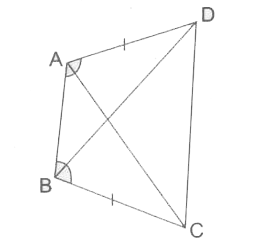
View SolutionAD and BC are equal perpendiculars to a line segment AB. Show that CD bisects AB.
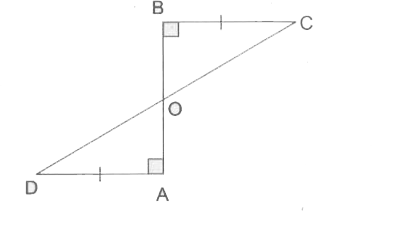
View Solutionl and m are two parallel lines intersected by another pair of parallel lines p and q. Show that `triangleABC ~= triangleCDA`
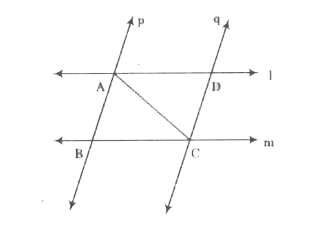
View SolutionLine l is the bisector of an angle `angleA` and B is any point on li. BP and BQ are perpendicular forms B to the arms of `angleA`. Show that:
`triangleAPB ~= triangleAQB`
(ii) BP = BQ or B is equidisitant from the arms of `angleA`.
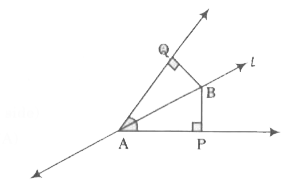
View SolutionIn given figure, AC=AE, AB=AD and `angleBAD = angleEAC`. Show that BC = DE.
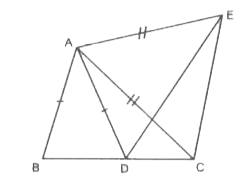
View SolutionAB is line segment and P is its mid point. D and E are points on the same side of AB such that BAD = ABE and EPA = DPB show that
(i) `Delta DAP ~= Delta EBP`
(ii) AD = BE
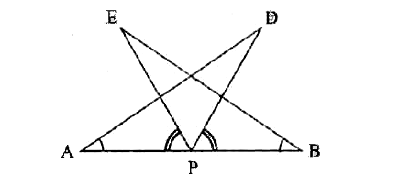
View SolutionIn right triangle ABC, right angled at C, M is the mid-point of hypotenuse AB. C is joined to M and produced to a point D such that DM = CM. Point D is joined to point B. Show that
(i) `triangleAMC ~= triangleBMD`
(ii) `angleDBC` is a right angle.
(iii) `triangleDBC ~= triangleACB`
(iv) `CM = 1/2 AB`
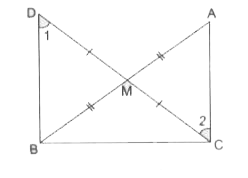
View Solution
EXERCISE 5.1 questions and complete solutions for chapter TRIANGLES of CAMBRIDGE MATHS (KANNADA ENGLISH) of Class 9